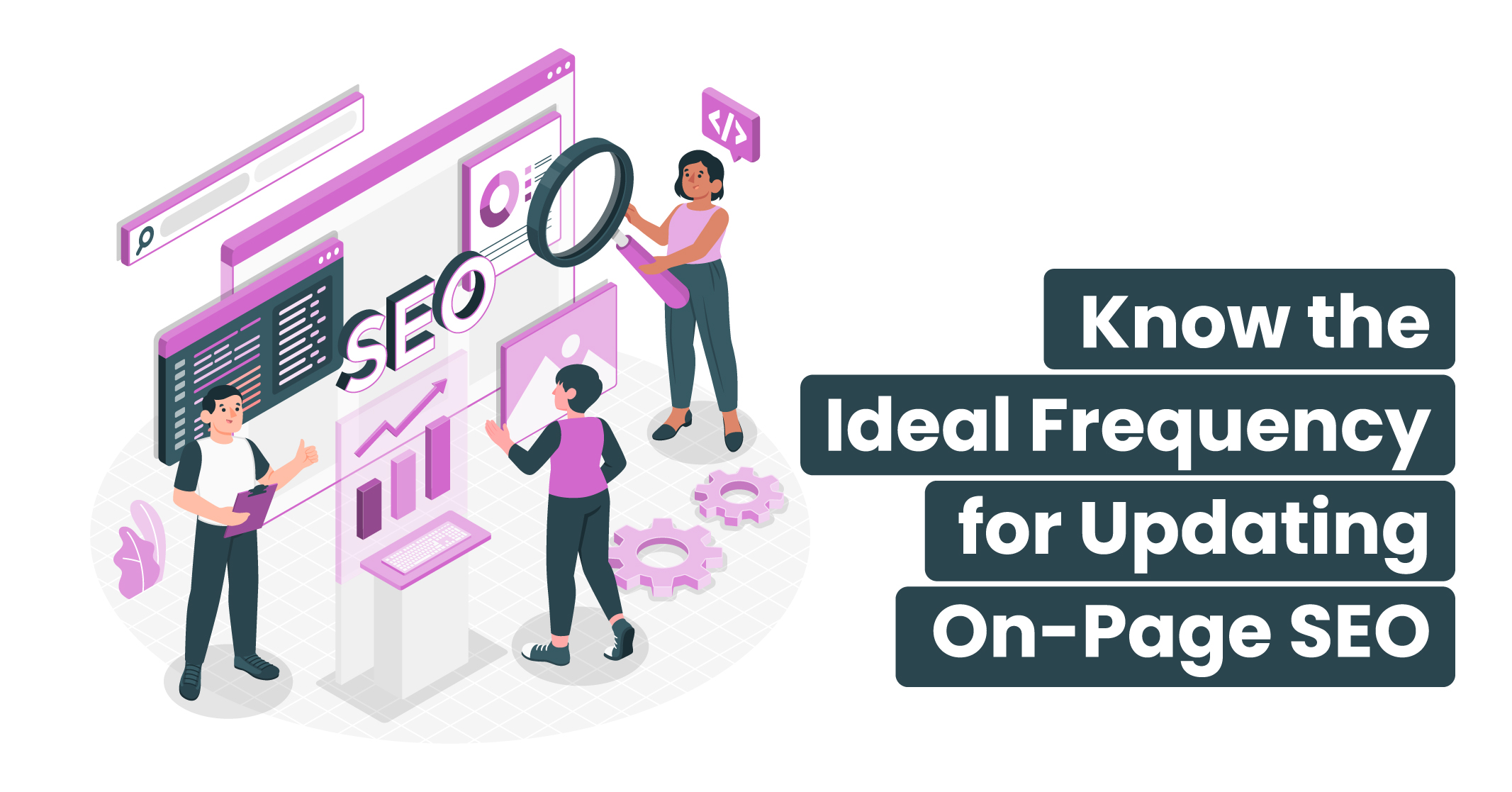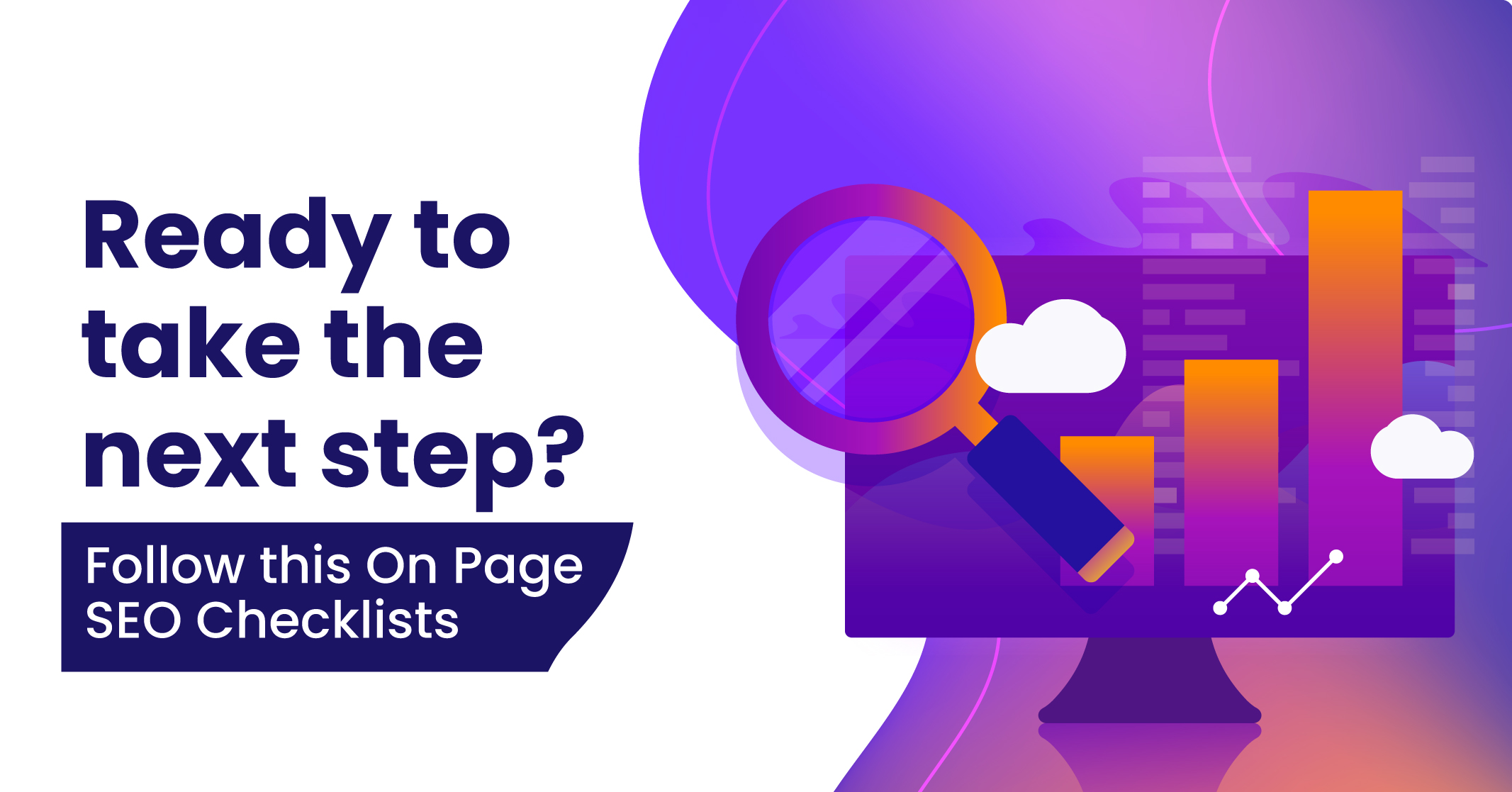I hope you enjoy reading this blog post.
If you want to get more traffic, Contact Us

Click Here - Free 30-Minute Strategy Session
Be quick! FREE spots are almost gone for this Month. Free Quote

Achieving consistent and satisfactory results in terms of SEO can be unpredictable. It encompasses various aspects, such as:
Despite diligently performing essential and time-sensitive optimisations, it can be challenging to ascertain when we have done enough or if it’s time to repeat the process all over again.

Click Here – Free 30-Minute Strategy Session
Be quick! FREE spots are almost gone for this Month
In many ways, the quest for improvement is never-ending as there is always room for adjustments and enhancements. However, striking the right balance in your workflow is a formidable task.
If you find yourself pondering how frequently you should devote attention to your SEO endeavours, we are here to assist you. In this blog, we will explore the ideal intervals for updating crucial on-page SEO, empowering you to approach your work with confidence, knowing that your time is dedicated to what truly matters.
Search engine optimization (SEO) is a dynamic field that is constantly evolving. As people’s search behaviour changes, search engines must adapt and provide relevant answers to their queries. Consequently, maintaining a high-ranking position in the search engine results pages (SERPs) requires on page SEO effort, regardless of the brand’s prominence.
This is why skilled marketers consistently monitor and optimise various on-page factors such as title tags, headings, internal links, alt texts and more. By doing so, they stay abreast of user habits, enhance their rankings and safeguard their positions.
What To Do?
By conducting strategic on-page SEO checks and making necessary tweaks at appropriate intervals, you can effectively manage a thriving website.
To achieve good SEO results, it is generally recommended to update your pages more frequently than you currently do. However, the specific frequency depends on the type of updates you need to make.
The ideal update frequency may vary across different sections of your website.
Here are a few on page SEO issues examples:
Let’s explore some scenarios that dictate the frequency of checking and updating on-page factors:
It is essential to plan and schedule audits for on-page SEO issues in each of these scenarios. This approach allows you to monitor the effects of changes on your site and optimise the on-page ranking factors accordingly.
Keep in mind that each case is unique, so consider the recommended cadences above as a starting point and tailor them to your specific needs. If your audits consistently yield no issues, you might reduce the frequency.
Conversely, if you frequently miss important competitor updates or on-page issues on your site, increasing the cadence may be necessary.

Improving and optimising SEO is an ongoing process that yields result over time. However, addressing urgent on-page issues promptly is crucial. Thankfully, there are tools available to alleviate the pressure and assist you in this endeavour.
How To Fix SEO Issues?
To fix the ongoing SEO issues, the following tools can help:
Site Audit
This tool allows you to schedule regular automated audits for as many pages as needed. Each time an audit is completed, you will receive a summary via e-mail. This comprehensive analysis assesses the overall health of your site, including on-page factors such as:
By identifying potential issues, you can make the necessary changes to enhance your site’s performance.
On-Page SEO Checker
On the other hand, On-Page SEO Checker provides you with a detailed list of improvement suggestions for every page on your site. You can prioritise these recommendations based on their importance. The tool offers insights ranging from technical fixes to content best practices. Armed with this information, you can address any on-page issues at your own pace and convenience.
By utilising the On-Page SEO Checker and scheduling regular Site Audits, you gain greater control over your site’s SEO, regardless of its size and learn how to fix SEO issues. These two tools enable you to proactively identify and rectify on-page issues, ensuring your site remains optimised and competitive in search engine rankings.
The size of your site does influence the frequency of on-page issues you may encounter. For smaller sites with fewer than 50 pages, on-page SEO issues are typically infrequent, allowing for less frequent checks and audits. Performing these checks every couple of weeks or even once a month should be sufficient.
On the other hand, larger sites with hundreds of product and category pages are more prone to on-page SEO issues due to the higher number of moving parts involved. As the size of the site expands and more individuals contribute to making changes, the likelihood of encountering knock-on effects increases.
What To Do?
Conducting weekly checks using Site Audit can be beneficial. This allows you to identify and address any issues that arise because of other activities within your business or external factors like changing search behaviours.
If you have complete control over your content management system (CMS), making necessary changes yourself is usually straightforward. However, if you lack control or are unsure about utilising the CMS, seeking assistance from developers may be necessary.
Keep in mind that developers often have extensive to-do lists which can delay the implementation of these changes and hinder the speed at which you achieve SEO results. Nevertheless, there are ways to expedite the process by taking matters into your own hands and making the changes yourself.

If you’re looking to make on-page SEO changes without relying on developers, you can use various tools. They provide a convenient solution that allows you to edit various on-page factors, such as:
Some tools also offer a browser extension and a snippet of JavaScript that you can use to implement the desired edits directly from your browser. This means you can swiftly make the necessary changes without delving deep into your CMS. The tools will allow you to monitor the effects of these edits within days.
While it’s crucial to prioritise on-page improvements, it’s important not to overwhelm yourself by feeling the need to constantly audit and make changes. Instead, embrace the understanding that tackling everything at once is unrealistic and adopt a well-planned workflow that focuses on the most critical aspects of your site.
This approach allows you to proactively maintain your site’s health while still having the flexibility to react to algorithm updates and other unexpected events.
What To Do?
To streamline your workflow and optimise efficiency, leverage powerful tools such as PageImprove, Site Audit and On-Page SEO Checker. These tools automate and expedite various aspects of your optimization process, allowing you to allocate more time and energy to analysis and implementing updates.
By utilising these tools, you take control of your SEO future and empower yourself to plan and execute an effective on-page optimization strategy.
Remember, it’s about finding the balance between being proactive and reactive, and the right tools can significantly support you in achieving that equilibrium. Start charting your on-page SEO strategy today and pave the way for sustained SEO success.

To optimise your website for search engines and enhance organic visibility, on-page SEO is essential. To ensure you cover all the crucial on-page factors, here’s a comprehensive checklist to guide your optimization efforts:
Conclusion: Remember, this on page SEO checklist offers a comprehensive overview of on-page SEO factors. Adapt and refine it based on your specific website and industry. Continuously evaluate your performance and stay updated with SEO best practices to ensure effective on-page optimization.

LEAVE A REPLY